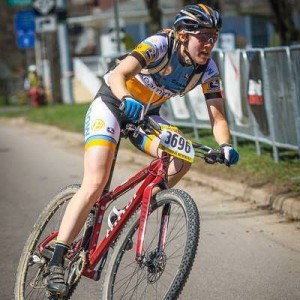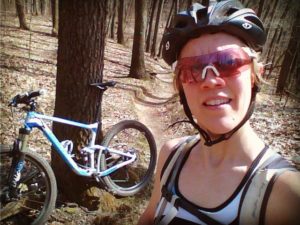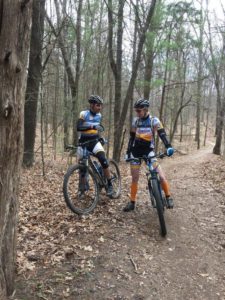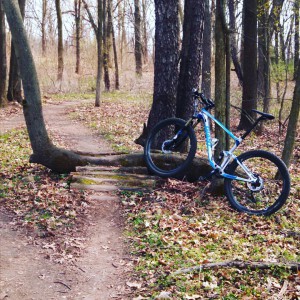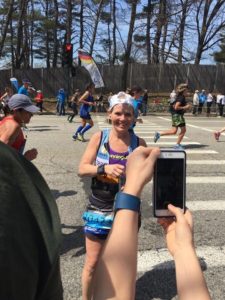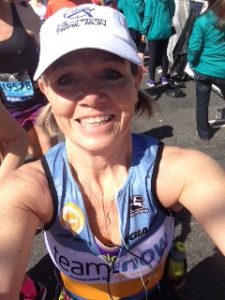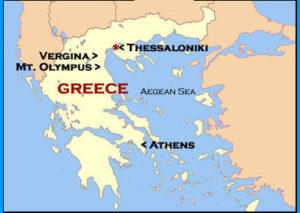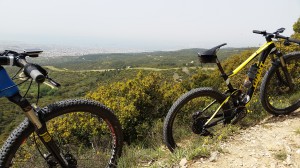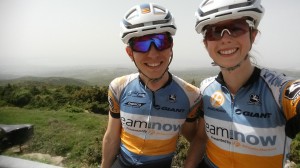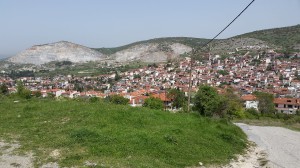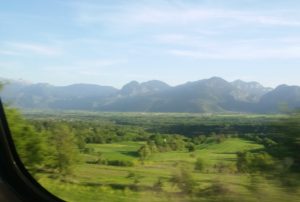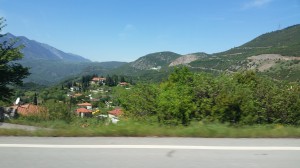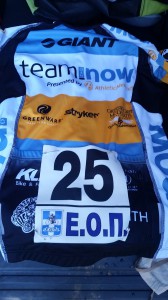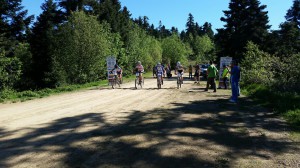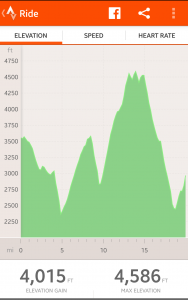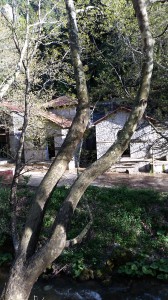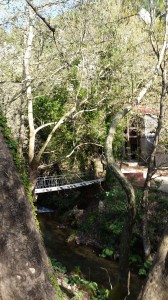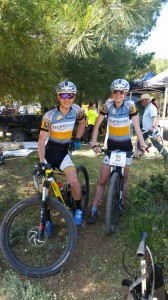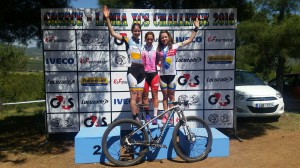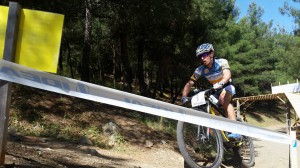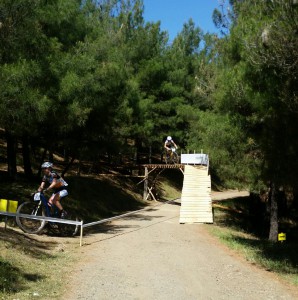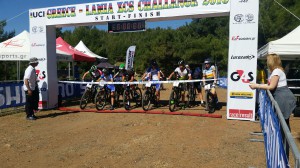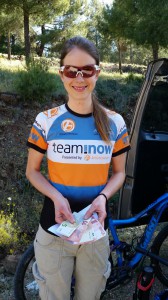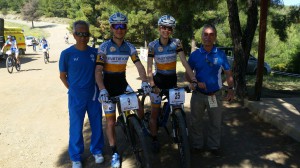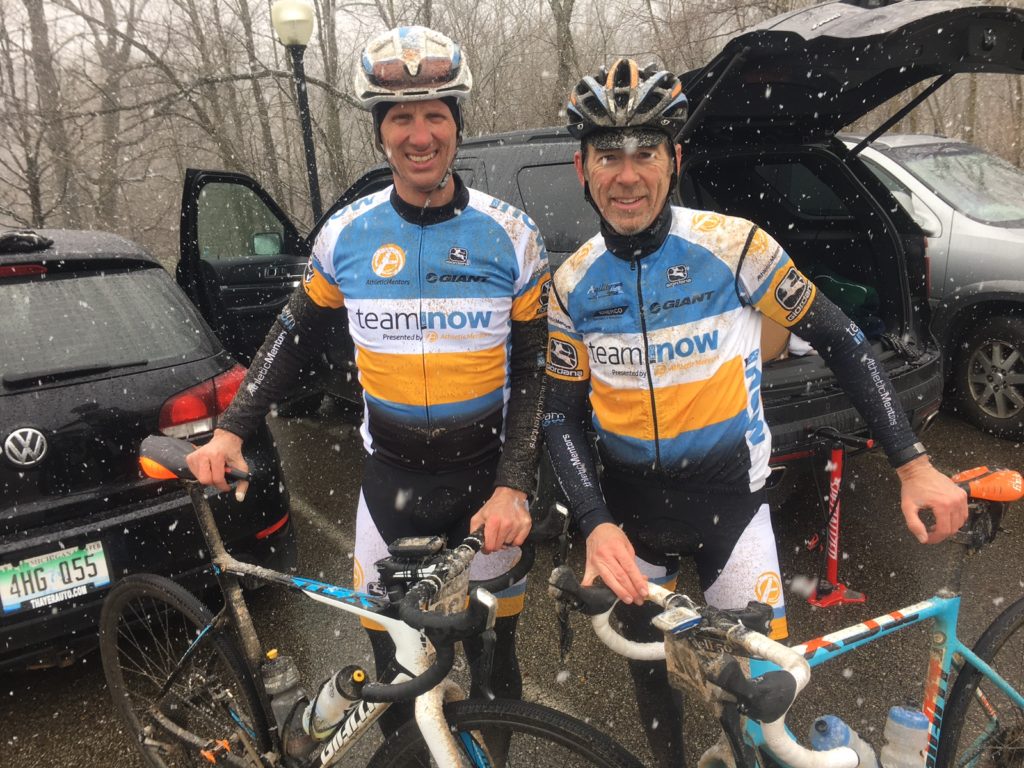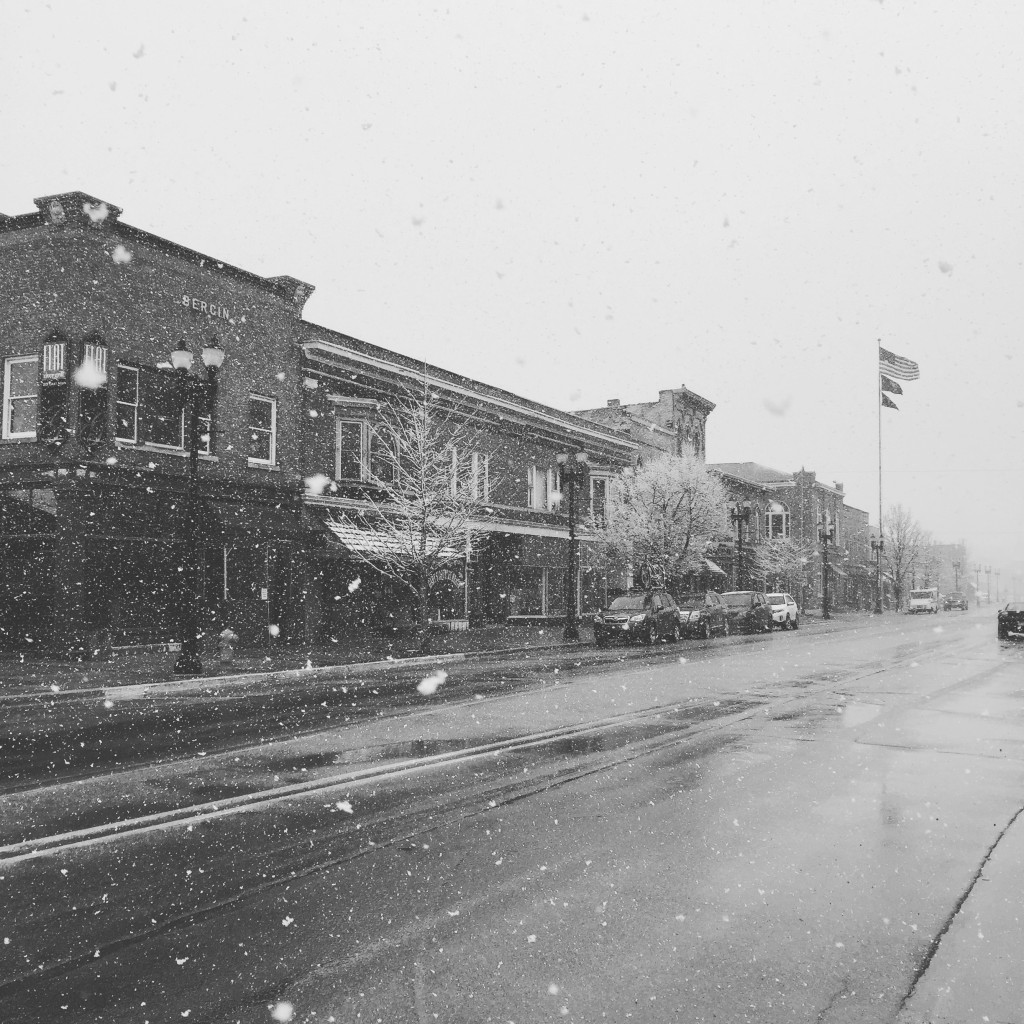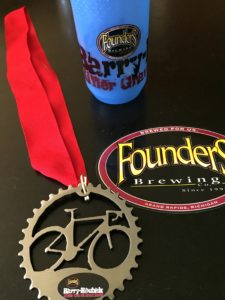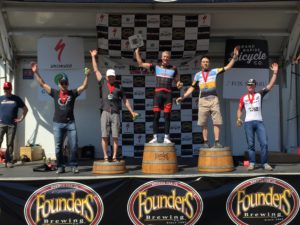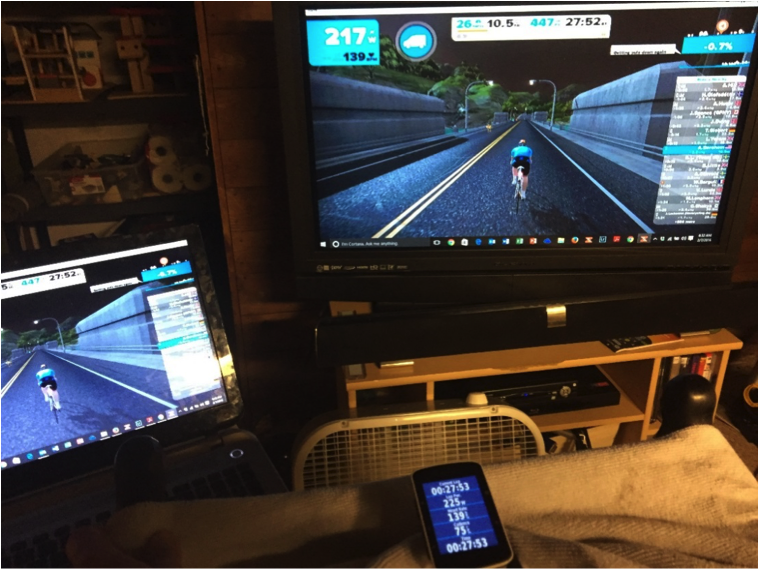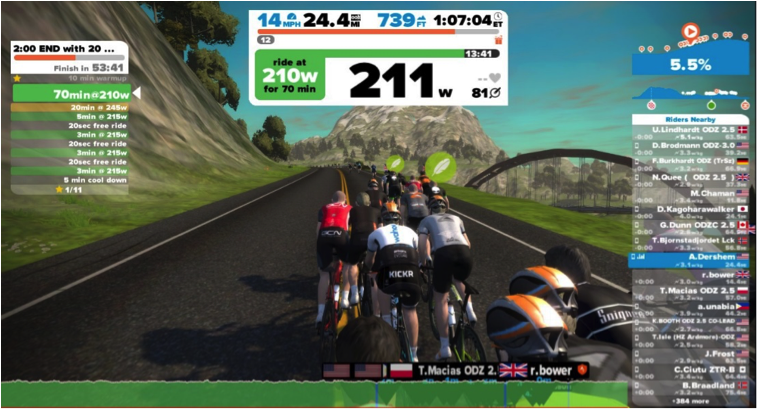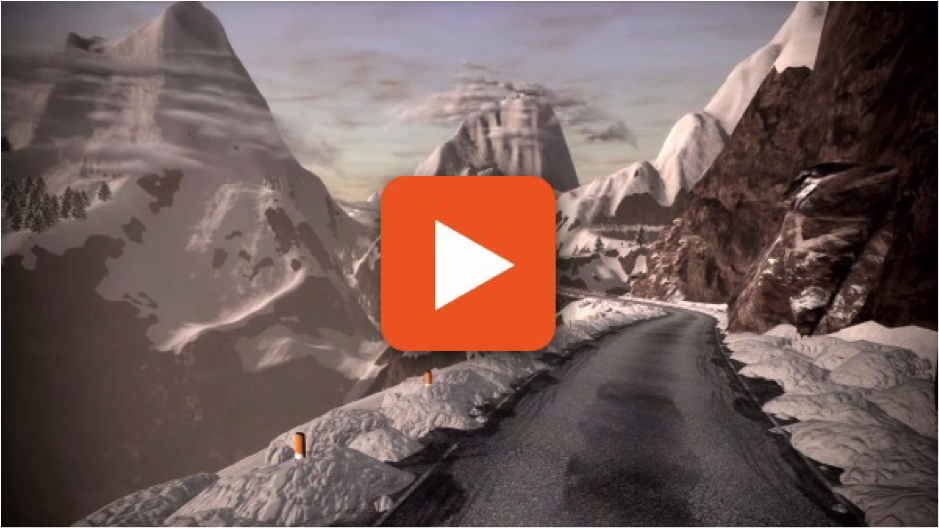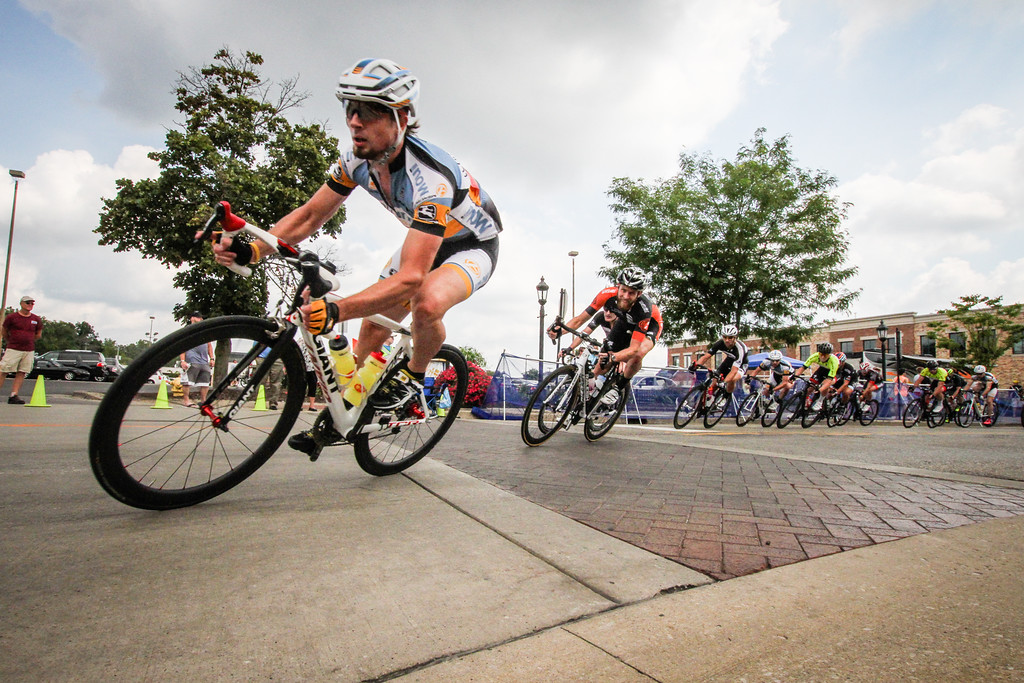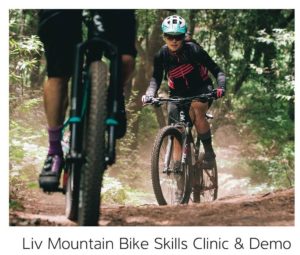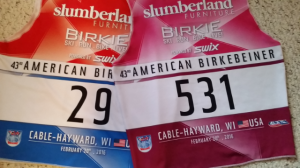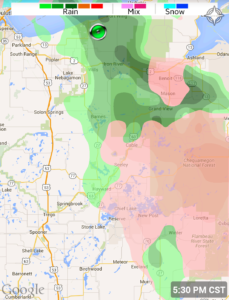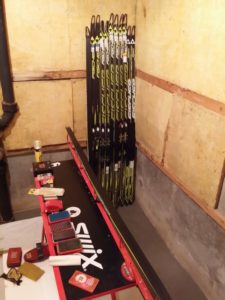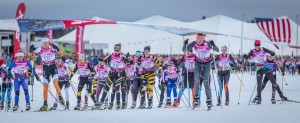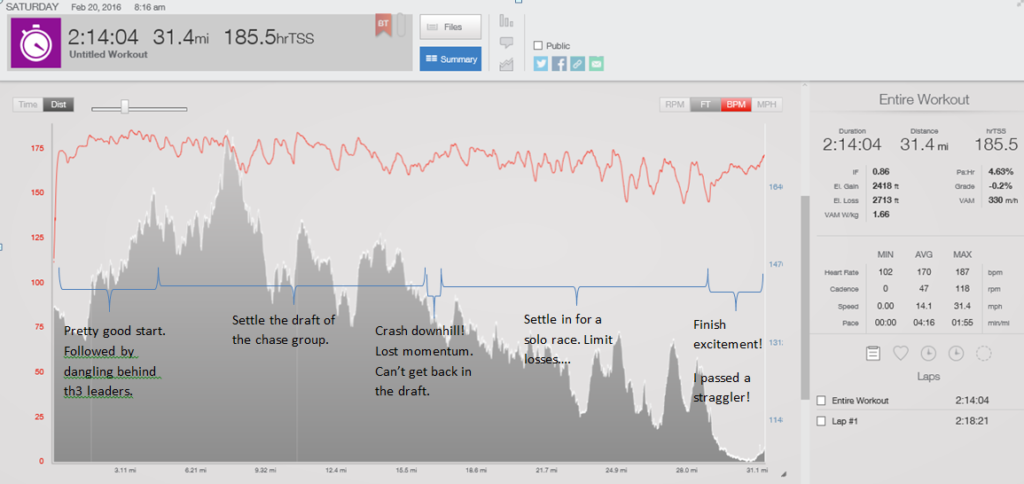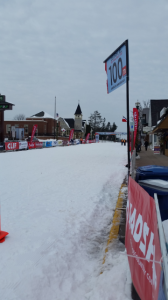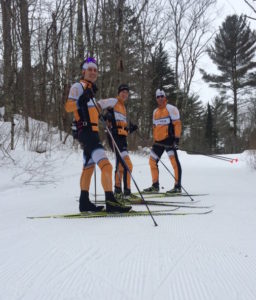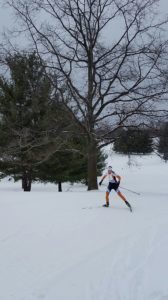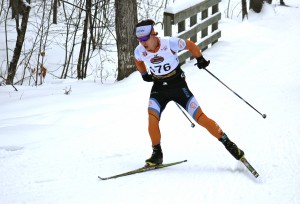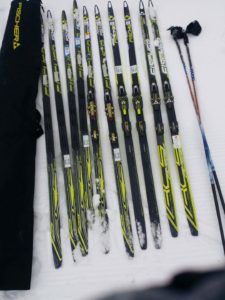–By Roxane Kippen, Multisport Athlete
Who needs Spring Break sitting around on a beach in Florida, when you can go on a bikecation? It doesn’t appear that “bikecation” is a term that has landed on wikipedia yet, since it gave me results instead for “bisection” when I typed it in the search. So, I will have to tell you a little about my week out of the office and on the trails to explain. Many cyclists head south to Alabama, North Carolina or Southern Indiana early in the spring for a training camp, where they ride all day and enjoy the warmer temps that may not always arrive in Michigan in a timely fashion. Instead of spending 15 hours in the car, packing countless bags and hoping for good weather when I get there, I decided to take a week off for a “staycation” and ride my bike closer to home with a 10 day forecast of nothing but sun and warm temps.
While North Carolina boasts of International Mountain Bike Association Epic Trail Tsali, Southern Indiana has its beloved Brown County and Alabama has Oak Mountain, the lower peninsula of Michigan has some pretty fine trails as well. I have ridden Tsali, Brown County and Oak Mountain, and I would have to say I enjoyed my week here on Michigan trails just as much. Every trail has something different to love and if they were all the same, that would be no fun at all. Let me take you on a brief tour of the trails I visited during my bikecation.
I started off the first weekend of my journey by racing the Barry Roubaix Killer Gravel Road Race. I logged 36 miles of gravel roads with 3,000 of my closest friends and teammates. After a relatively hard effort during the race, I spent Sunday on a shorter “recovery” ride with friend and former teammate John. We rode the most convenient location, which happened to be the Cannonsburg State Game Area (CSGA) and the Cannonsburg Ski Area (CSA), together a.k.a. “The Combo” or “The Connector”. We avoided the “Up the Gut” climb at the ski area and enjoyed a leisurely pace through the game area and logged 14 miles of mountain biking. I didn’t want to wear myself out on the first day of my bikecation! I had a lot of time in the saddle (and chamois cream) coming up.
It was hard to decide where to go on what day, but I started off on Monday at Yankee Springs Recreation Area in Middleville, MI. The body takes a beating on this trail as there are a lot of rocks and roots and a bit more climbing than the Cannonsburg trails from Sunday. I rode 23 miles solo (two loops) at a Sunday driver pace and took most of the climbs in granny gear; riding by myself I didn’t dare take any chances of sliding off a cliff or wrapping myself around a tree. The temp was close to 80 degrees and the course was extremely dry, loose and sandy, almost as if it were the middle of July already.
Three hours in the heat and I felt like day two of bikecation was solid. Fort Custer Recreation Area (The Fort) was the trail of choice on day three. Tuesday conditions were cool but comfortable and made for another great day of riding. XTERRA training buddy Alan and I took on a couple laps at The Fort and logged 17 miles of super cool singletrack and even threw in a twenty- minute brick run after our ride. The Fort was where I feel I really learned to mountain bike. Nearly 10 years ago, I spent countless weekends prepping for my first XTERRA (offroad triathlon) at The Fort. It is still my favorite race venue for XTERRA. It is always hard to tell someone if a trail is technical, because technical could mean many different things. To me, this trail was technical and for me that means rooty, steep switchback climbs that require great focus and balance and some tighter twisty/turny sections. With trail sections call Amusement Park and Grannies Garden and trail features like the Demon Drop and the Trenches, it is definitely a trail with a large variety of riding and it never gets boring.
Wednesday, I met up with long-time mountain biker and teammate Terry Ritter to get a bit of an evaluation on my riding skills at the Potawatomi Trail (Poto) in Pinckney, MI. I also had the opportunity to connect with local rider and fellow XTERRA racer, Heather, for the ride. The trip is just under two hours from Grand Rapids, and I would highly recommend it. I had never ridden the trail before so it was a good test of my trail reading and bike handling “tool box”. My biggest opportunity is to better utilize my momentum. I think Terry suggested/threatened that I need some single speed work to force me to use my momentum more effectively. Thanks, Terry, for your time and knowledge and helping me log another 17.5 miles of trail riding on day four of my bikecation.
Of course, the meteorologist had to get one day wrong out of that 10 days of forecasted sun, and it happened to be on Thursday. The morning was cool and rainy, so I took the opportunity to catch up on some housework and volunteer activities. By the afternoon, things were clearing up to the north so I summoned a couple of my regular XTERRA training partners for a trip to Owasippe Trail. This trail is on a Boy Scout reservation near Whitehall, MI and has some of the most fun singletrack riding in Michigan. It is tough to describe this trail and why I love it so much, but it has some nice smooth areas, some brutal technical climbs with bumpy descents, a couple of long narrow bridge crossings and spectacular views of water and woods all around. The rains left the trail in perfect condition as the sand soaked up the moisture and packed down for a fast trail. We logged 23 fabulous miles and went to a local brewery for a well-earned recovery beverage.
I started to feel my legs squawking at me after the ride at Poto on Wednesday. The climbs were tougher and there were times when I powered a little harder through sections than I had earlier in the week. This was evident each time I ascended a set of stairs in my house. Definitely after the Owasippe ride, my legs had done what they set out to do for the week and I needed a recovery day. Friday I did just that. I recovered, I napped with my cat Asher (the master napper) and I watched Netflix. I did, however, log 4 miles riding to and from Belle Tire when I dropped off and picked up my car for a tire rotation.
After a full week of riding totaling 36 miles of gravel, 95 miles of singletrack and a 4 mile commute, I headed into the weekend for two more days of training before going back to the cubicle world. I pushed myself through a 5K run at the Striders Classic on Saturday and rounded out Sunday with another 23 miles at The Fort for a total of 118 miles of mountain biking in 8 days. That may be more than I’ve done in a stretch of several months during the season! It is very difficult to pick a favorite trail, but I will have to stick with Owasippe as my #1 and Fort Custer as a close #2.
To check out more information on these trails, click the hyperlinks above that will take you to the International Mountain Bike Association (IMBA) listing or look them up on the Michigan Mountain Bike Association (MMBA) Trail Guide at http://mmba.org/trail-guide/. If you are worried about getting lost in the woods, you can download the MTB Project app, by IMBA, to your phone and it will show your location as you ride on the trail. Local bike shops can also give you tips on how to find and what to expect of the trails nearby. The mountain bike community welcomes new riders with open arms, so if you’ve been hesitating to give it a try, I highly encourage you to take the leap and check out a local trail.






